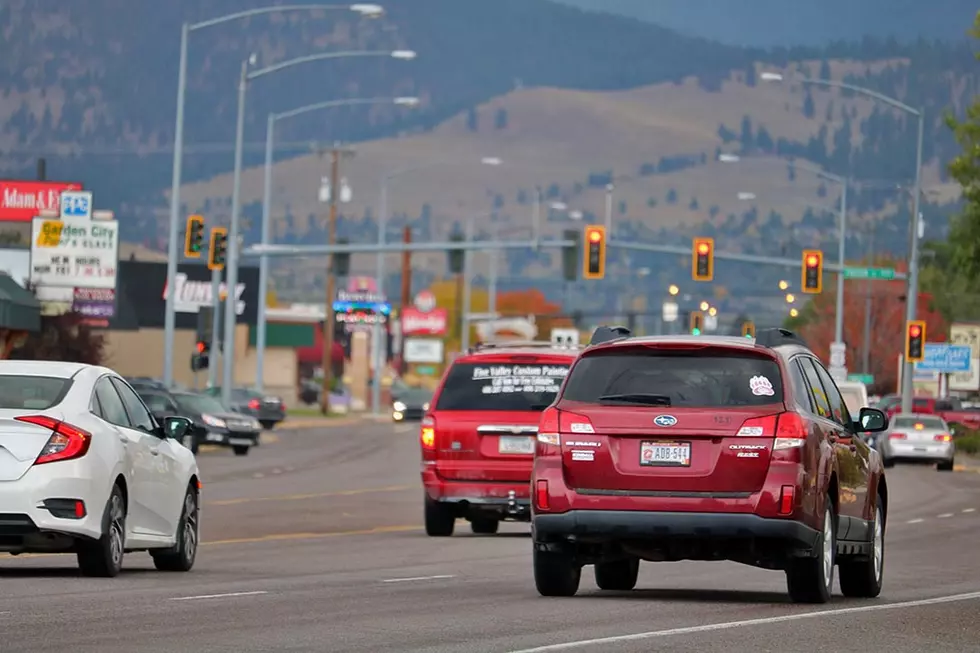
Survey: More see Missoula’s transportation system in decline
Martin Kidston
(Missoula Current) A transportation survey sponsored by Missoula's Metropolitan Planning Organization found that a growing number of people see the city's transportation system in decline – a response that took some members by surprise.
The survey, conducted by the Bureau of Business and Economic Research at the University of Montana, is conducted every four years, providing what transportation planners describe as a “consistent” level of data comparing changes over time.
The survey was last conducted in 2019 and represents a random sample of households within the metropolitan planning area, which encompasses the City of Missoula and surrounding metro area.
“We have almost 16 years of data now,” said Aron Wilson, the city's transportation planner. “We try to ask the same type of questions so we can compare that trend over time.”
In 2019, around 36% of respondents ranked the quality of the city's transportation system as “good,” though that fell to 34% in the last survey. In 2019, nearly 27% ranked the transportation system as “very good,” though that also fell to just 19%.
Around 48% of respondents also suggested that traffic congestion in Missoula had a very large or somewhat large impact on them. Wilson said the perceived decline in the transportation system mirrored a perceived decline in Missoula's quality of life.
“There's the perception that the quality of our transportation system is going down,” Wilson said. “People perceive that congestion is getting worse than it was four years ago. People think traffic is worse.”
When asked about system priorities, 64% of all respondents named roadway maintenance or reconstruction as the top priority. Another 36% named the restoration of passenger rail or commuter rail service as the second highest priority.
Parking ranked third at 33% followed by sidewalks at 27%. Electric vehicle infrastructure, bike lanes and trails ranked toward the bottom of all priorities.
However, when asked what modes of travel they support, 39% of respondents said they would consider purchasing an electric vehicle the next time they shop for an automobile. Another 44% said they supported the use of e-bikes and scooters. But when asked if they'd use a share system, only 23% suggested they would.
“There's support for those modes, but not necessarily a lot of interest in using a shared mobility service,” said Wilson. “But there isn't one in Missoula today, so I don't know if people are necessarily thinking of how they'd use it.”
The survey also found that 86% of respondents commute around the city by vehicle – a figure that has grown since the last survey. The number of respondents who walked also increased from 4% to 7% and the number of those who rode the bus increased from 2% to 4%. But the number of those who biked fell from 5% to 3%.
Wilson attributed the changes to the survey being conducted in the winter as opposed to the fall.
The city's transportation goals have in recent years made decisions intended to decrease the number of cars on the road and increase those who commute by other means. But increasing multi-modal travel still faces a number of barriers, with weather being the most common, according to the survey.
Safety concerns also play a role in keeping more people from biking.
“Increased separation (from cars) is really important for people feeling comfortable or wanting to bike more,” said Wilson. “Some of that may be that our transportation system needs to be more convenient for all of these different modes, or that people just find it easier to drive.”
Passenger rail also appeared on this year's survey for the first time. Around 80% of those surveyed expressed strong support for the restoration of the North Coast Hiawatha across Montana's southern tier.
When asked if they would likely use the service, 51% said yes, primarily for recreation, tourism, events and long-distance travel.
“It's affirmation of everything we've been working on, but it's also affirmation of asking the question in the first place,” said Missoula County Commissioner Dave Strohmaier, chairman of the Big Sky Passenger Rail Authority. “Out of all the priorities you can imagine regarding transportation in this area, passenger rail ranked second, just behind maintenance of existing infrastructure.”
Strohmaier, who also serves as a member of the Metropolitan Planning Organization, added the survey's results should help inform transportation planners and policy makers moving forward.
“Maybe we need to recalibrate our investments and priorities based on what we've heard from the public regarding their priorities,” he said. “I suspect it will be an ongoing point conversation, especially as we're working on our Long Range Transportation Plan. The survey is a component of the work that will inform that plan.”
